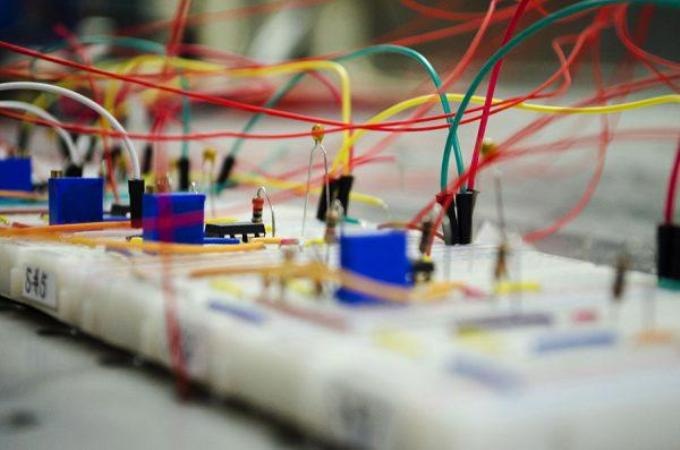Nov 24 2016
 The research team created a new sensing technology platform by using adaptive metamaterial concepts. The platform creates a hybrid wave concentration mechanism through the material’s ability to further tune the signal and using electric signal amplification provided by a set of circuits connected to an array of sensors. (Photo by Ryan Owens.)
The research team created a new sensing technology platform by using adaptive metamaterial concepts. The platform creates a hybrid wave concentration mechanism through the material’s ability to further tune the signal and using electric signal amplification provided by a set of circuits connected to an array of sensors. (Photo by Ryan Owens.)
Piezoelectric sensors are capable of measuring alterations in acceleration, pressure, strain, temperature, or force and are used in a large array of devices important to daily life. However, these sensors can often be obstructed by the “white noise” they detect which then results in engineers and health care workers receiving false readings.
Recently, a research team from the University of Missouri College of Engineering has developed techniques to improve piezoelectric sensing capabilities. Optimized sensors could be used to enhance aviation, detect structural damage in bridges and buildings, and further the functionalities of health monitors.
Guoliang Huang, an associate professor of mechanical and aerospace engineering in the MU College of Engineering, and his team’s new system enhances sensors by amplifying the signal, allowing the same quantity of sensors to read extra data. Their new device also reduces costs by allowing fewer sensors to cover longer distances and larger structures.
In the past, methods to produce signal intensification only have included electrical amplification. Our technique uses a combination of mechanical and electrical amplification, overcoming the limitations of using just electrical amplification.
Guoliang Huang, University of Missouri
The new sensing system can be “tuned” using an electric signal, which when connected to circuit boards with sensors can detect weaker signals that in the past could not be detected.
The amplified wave cuts through the surrounding noise. It’s the first such device that illustrates how to use adaptive metamaterials to improve elastic wave sensing capabilities. This can be very useful to developing high-sensitivity sensing technology.
Guoliang Huang, University of Missouri
“Enhanced flexural wave sensing by adaptive gradient-index metamaterials,” was published in Scientific Reports a journal of Nature. The project was funded by the U.S. Air Force Office of Scientific Research. Byung-Lip (Les) Lee served as the program manager.